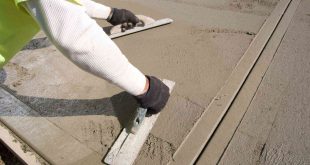
A well-designed corporate website is a key component for establishing a strong online presence. According to mightymegaphone.com, whether you’re creating a new site or updating an existing one, understanding the fundamental structures that should be included in your design is crucial for both functionality and user experience.
Here are the essential structures that need to be incorporated into any official company website design.
1. Homepage
The homepage is the gateway to your website and should provide a clear overview of what your company does. It must grab attention immediately and guide visitors to key sections of the site. The homepage should feature:
- A compelling headline that clearly describes what the company offers.
- High-quality images or videos that reflect your brand’s identity and values.
- Call-to-action (CTA) buttons such as “Contact Us,” “Request a Quote,” or “Learn More” to encourage interaction.
- Navigation bar with links to other important pages, ensuring the site is easy to explore.
2. About Us Page
The About Us page is essential for building trust with your audience. This is where visitors can learn about your company’s history, mission, values, and team. It’s an opportunity to humanize your brand and establish credibility. Key elements include:
- Company history and background.
- Mission statement that highlights your core values and vision.
- Team bios or introductions that showcase the people behind the company.
- Awards or recognitions that demonstrate your achievements.
3. Products or Services Pages
Your products or services pages are where you highlight what your company offers. These pages should clearly describe the benefits and features of each product or service. You should include:
- Detailed product/service descriptions that answer common questions and provide all necessary information.
- Images, diagrams, or videos to show the products or explain services.
- Pricing information if applicable, or a prompt to contact the sales team for a quote.
- CTA buttons like “Buy Now” or “Get a Quote” to encourage conversions.
4. Contact Page
The contact page is one of the most important structures in your website design. It should make it easy for customers to get in touch with your business. Essential features include:
- Contact form for inquiries, support requests, or quotes.
- Phone number, email address, and physical address.
- Map integration to show your company’s location.
- Social media links to help visitors connect with your brand through other platforms.
5. Testimonials or Case Studies
Incorporating testimonials or case studies helps build trust by showcasing customer satisfaction or successful projects. Whether it’s through written feedback or video interviews, this content validates the quality of your products or services and builds credibility. Include:
- Customer testimonials that highlight positive experiences.
- Case studies that detail successful projects or collaborations.
- Ratings or reviews if applicable to your industry.
6. Blog or Resources Section
A blog or resources section can improve your SEO ranking while also providing valuable content for your audience. It can include industry insights, news, tips, and educational content. A well-maintained blog keeps visitors coming back and increases your site’s visibility in search engines.
7. Footer
The footer is a small but essential part of your website. It typically appears at the bottom of each page and should include:
- Quick links to important pages like Privacy Policy, Terms & Conditions, and FAQs.
- Contact information, including phone number and email address.
- Social media icons that link to your profiles.
- Newsletter signup form for visitors to stay updated.
Designing a corporate website involves more than just aesthetic appeal; it requires strategic planning of various structures to ensure functionality, user experience, and SEO effectiveness.
By including a well-structured homepage, an informative About Us page, detailed products or services pages, an easy-to-use contact form, and additional elements like testimonials, blogs, and a footer, you can create a website that is both user-friendly and effective in driving business growth.
Ensure these structures are optimized for mobile and desktop use to reach the widest audience possible.
 Mama Bilang Ikut Kata Mama
Mama Bilang Ikut Kata Mama



